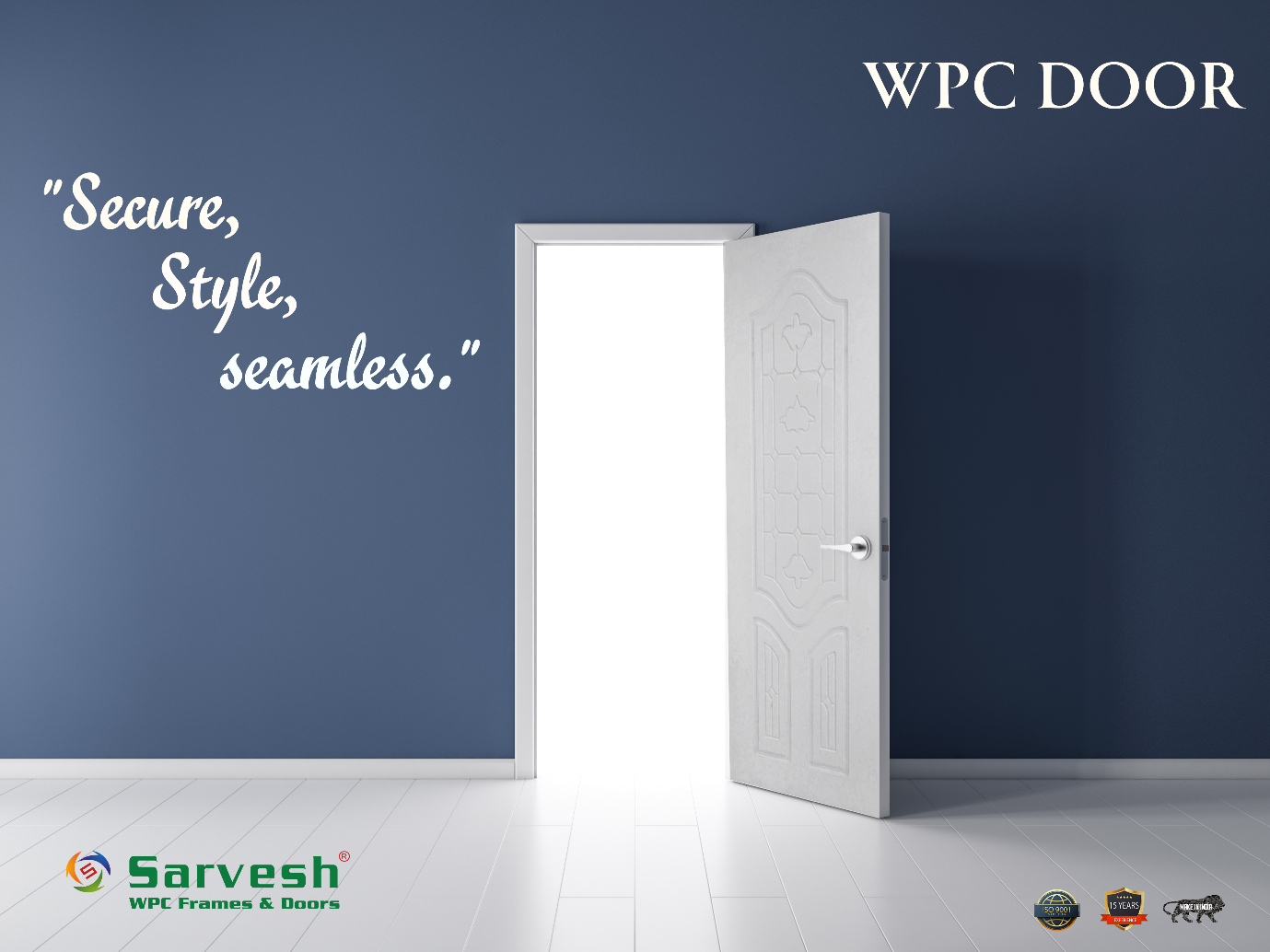Blogs
Understanding WPC Doors: Structure WPC and Solid WPC

As building materials continue to evolve, WPC (Wood Plastic Composite) has emerged as a strong, sustainable, and aesthetically versatile alternative to traditional wood. Offering a perfect blend of natural wood fibers and synthetic resins, WPC doors are increasingly being used in modern homes, commercial interiors, and real estate projects for their durability, water resistance, and eco-friendliness.
At Sarvesh, we offer a wide range of WPC door solutions tailored to suit different needs under our trusted brand Sarvesh. This includes:
- Structure WPC Doors
- Solid WPC Doors
Let’s explore the differences, advantages, and ideal applications of each type.
What is WPC?
WPC (Wood Plastic Composite) is a hybrid material made from a combination of wood fibers and thermoplastics (like PVC, PE, or ABS). It retains the natural look of wood but offers superior resistance to water, termites, and weather changes—making it ideal for use in doors, frames, and panels.
1. Structure WPC Doors – Strength with Smart Design
Structure WPC doors are made using a hollow-core design with internal reinforcement, typically with a foam or cross-support structure. They offer the same finish and durability as solid doors but with a lighter weight and cost advantage.
Features:
- Lightweight yet durable
- Moisture-resistant and termite-proof
- Ideal for bedrooms, kitchens, and indoor spaces
- Customizable with lamination, paint, or digital print
Advantages:
- Easier to transport and install
- Economical for budget-conscious projects
- Reduces structural load in high-rise buildings
2. Solid WPC Doors – Maximum Strength & Longevity
Solid WPC doors are made with a single, dense, solid WPC sheet—providing unmatched sturdiness and durability. These doors are engineered to perform well in the most demanding environments and can also be used for external door applications.
Features:
- Completely solid, impact-resistant body
- Excellent thermal and sound insulation
- Can be carved, CNC-cut, or laminated
- Suitable for main doors, exterior installations, and high-security areas
Advantages:
- Long lifespan and minimal maintenance
- Can withstand harsh weather, frequent use, and heavy wear
- Ideal for luxury villas, institutions, and commercial buildings
Eco-Friendly and Sustainable
All our WPC doors are:
- Formaldehyde-free
- 100% recyclable
Manufactured using sustainable processes
Trending Blogs
Latest Blogs
© 2025, Sarvesh. All rights reserved.